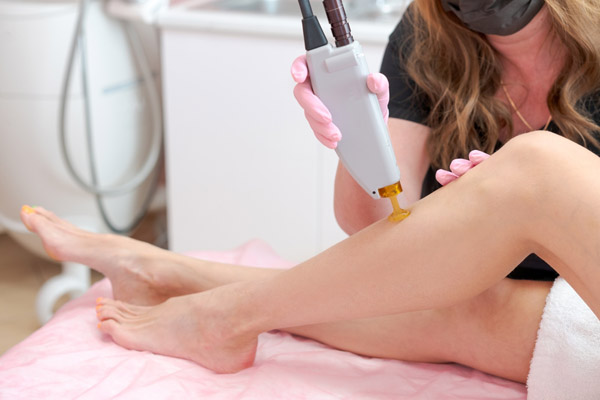When Is Nose Surgery Needed?

Thousands of people undergo nose surgery every year. The reason varies; it could be to correct an injury or congenital disability, improve the shape of the nose, resolve breathing issues, or support an aging nose. The surgery often follows a recommendation from a medical professional who specializes in nasal function and plastic surgery. This will ensure proper breathing and an improved appearance.
The need for nose surgery
Plastic surgery for the nose (known as rhinoplasty) deals with the shape of the nose and how it aligns with other facial features. Since the nose is a prominent feature, only a minor change can enhance its appearance. Before the surgery, the patient needs to have a full and concise understanding of what change is achievable, including the limitations and risks of the procedure. The following are situations where a nose surgery would be recommended.
Nasal obstruction
Many people deal with recurring nasal stuffiness or obstruction. The nasal obstruction could be due to a structural issue in the nose or swelling resulting from conditions like allergies and chronic sinus inflammation.
A blocked nose may result from a deviated septum (the wall that divides the nostrils). The septum may be bent or crooked due to injury or abnormal growth. This may close one or both nostrils partially or completely. Many people have a form of septal deviation; however, when a deviated septum causes significant nasal or breathing inhibition, the patient will need a nose surgery called septoplasty. The surgeon may perform cosmetic or structural modifications to the nose at the same time in a procedure called septorhinoplasty.
Stuffiness or nasal obstruction could also be caused by the enlargement of the structures located in the nasal passages (known as turbinates). Sometimes, the turbinates require intervention to reduce them and open the nasal passages. The intervention options include turbinate reduction or partial removal. Allergies can also cause nasal obstruction and turbinate enlargement, so it is advisable to consider allergy testing and treatment.
Narrow valves or nasal valve collapse can block airflow into the nose openings. The cartilages supporting the nostrils may be pinched or collapse with air intake. If the use of nasal strips or splints works, nasal valve surgery or rhinoplasty may be needed to improve airflow.
Aging may also cause nasal obstruction. The cartilage in the nose and its tip may get weaker with age and droop under gravity, leading to the collapse of the nostrils, restricting airflow. Mouth-breathing and loud or restricted breathing may occur.
Broken nose
A crooked nose or bruising around the nose and eyes after an injury is usually a sign of a fractured nose. If the bone is badly displaced, the surgeon may try to restore the nasal bones to a straighter position in a procedure called nasal fracture reduction. The procedure is done within the first seven to 10 days after the injury. Another option is septorhinoplasty.
How can I tell whether nose surgery is right for me?
A board-certified plastic surgeon will carefully examine a patient's medical history and expectations to decide if they are eligible for nose surgery. A suitable candidate should meet all the following criteria:
- Above age 13 or older to ensure full facial development
- Good health
- Avoids heavy drinking or smoking
- Realistic expectations about the procedure
What matters most is to consult with an experienced, board-certified plastic surgeon to discuss desired outcomes.
What process is involved in nose surgery?
A nose surgery often requires the use of IV sedation or general anesthesia. The procedure normally takes around one to two hours. When it comes to nose surgery, surgeons often choose between two approaches. With closed nose surgery, which is the most common procedure, the surgeon makes the incision inside the nostrils. The columella, a thin layer of tissue that separates the nose and mouth, is cut for an open rhinoplasty.
The surgeon uses both approaches to elevate the soft tissues surrounding the nose. The surgeon sculpts the bone and cartilage to achieve the desired result. The septum is a good source of any extra cartilage required for nose surgery. For patients with a deviated septum, the surgeon will realign the nose and its internal tissues to ease breathing. The tissues are then re-draped and sutured. The last step in a rhinoplasty procedure is to reshape the patient's nostrils if preferred.
Final note
Rhinoplasty is a personalized nose surgery that requires a consultation with a surgeon to discuss the patient's goals regarding appearance and a breathing evaluation.
Request an appointment here: https://paulcdillonmd.com or call Paul C. Dillon, MD Inc at (847) 429-3185 for an appointment in our Schaumburg office.
Check out what others are saying about our services on Yelp: Read our Yelp reviews.
Recent Posts
A breast lift reshapes and raises the bust, while breast augmentation increases volume and enhances contours. While both procedures improve the breasts ' appearance, they serve different purposes. When exploring these options, it helps to understand how each one works, when one may be more beneficial over the other, and when the plastic surgeon may…
In recent years, there have been major changes in the methods for unwanted hair removal, offering individuals several options for smooth, hair-free skin. Two of the most popular treatments, laser hair removal and waxing, are known for their effectiveness and for providing long-term results. While both methods focus on reducing hair, they differ in their…
Medical-grade facials offer a level of care and results that traditional spa treatments cannot provide. This treatment combines the science of plastic surgery and cosmetic benefits to address deeper skin concerns. Unlike general relaxation facials offered at spas, medical-grade facials are performed in medical environments with professional oversight.A primary difference between medical-grade facials and spa…
As with any surgical procedure, the recovery period of a tummy tuck is crucial to its success. The key to a successful recovery is knowing what to expect so you can prepare ahead of time. Understanding what to expect can help ensure a smooth recovery.It is important to note that recovery timelines vary by patient,…


